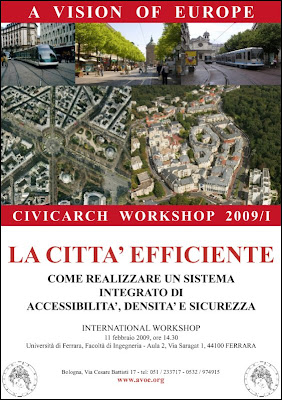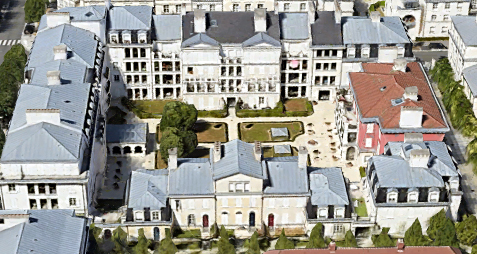The Recession is wiping out this architectural and democratic contradiction.
Because you cannot build a skyscraper in phases. It must be built at once.
It is not like an organic urban neighborhood that can be built through phases. One block after the other. If the economic situation is good and the market booming fine. If not, slowly, one block after the other.
The skyscraper is not flexible. And like all the rigid things, today is in danger.
Good news for the EU cities!

-------------------------------------------------------------------------------------------------
E' interessante notare come la Grande Crisi, che si sta diffondendo in ogni dove, stia attualmente compromettendo tutti gli stupidi progetti per torri e grattacieli.
E' una vecchia storia.
Per secoli le città sono state costruite nel rispetto di limiti di altezza.
Che siano 3 piani per Ferrara, 7 per Parigi e Berlino o più. Ma tali limiti si fanno espressione di un concetto profondo e democratico.
Tutti i cittadini sono uguali davanti alla Legge.
E così o tutti hanno il diritto di costruire grattacieli -come in Up-Town e Mid-Town Manhattan- o non ce l'ha nessuno -come a Washington D.C.
Gli Stati Uniti sono molto chiari a riguardo, la Comunità Europea no.
Le città europee sono l'espressione di una cultura che ha sempre incontrato difficoltà nell'adottare un vero processo democratico. L'idea più diffusa è quella secondo la quale, una volta eletto, il sindaco può autorizzare i propri "amici" a costruire grattacieli -guadagnando ovviamente ingenti somme di denaro- mentre il resto della cittadinanza non può usufruire del medesimo diritto.
Il risultato diventa evidente guardando i patetici skyline di molte città europee, nei quali gli altissimi edifici rovinano la bellezza e l'omogeneità del profilo di un'organismo all'interno del quale solamente le Pubbliche Istituzioni -il Comune, la Cattedrale, etc.- hanno per tradizione il diritto di spiccare al di sopra di tutto.
Il Campanile è una torre con un solo piano! Meglio non dimenticarlo. E da qui il problema si fa evidente.
Si possono avere edifici e monumenti alti quando si ha a che fare con le Istituzioni Civiche. Ma l'edilizia privata deve essere sogetta a una equa regolamentazione.
Oggi questa patetica situazione sta drammaticamente cambiando.
La Recessione sta spazzando via questa contraddizione architettonica.
E questo perchè non è possibile costruire parti di grattacieli in tempi diversi. Bisogna realizzarli in un'unica fase. Diversamente da quanto si potrebbe invece fare per un Quartiere Urbano Organico, che si sviluppa un blocco dopo l'altro. Se la situazione economica e di mercato è buona.
Sennò, lentamente ma sempre un blocco dopo l'altro.
Il grattacielo non è così flessibile. E come tutte le cose che soffrono la mancanza di flessibilità oggi è in pericolo di estinzione.
Ottime notizie per tutte le città europee!






